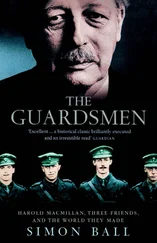Banks attended his first meeting at the Royal Society on 12 February 1767 shortly after his return from Newfoundland and Labrador.[26] Though he was not in London when, in November 1767, the Committee of the Transit recorded its decisions about how the Society wished to have Venus’s track observed, it is very possible that he knew about it shortly afterwards, and certainly by the time of the ‘Memorial’ to the King on 15 February 1768, Banks had made up his mind to try and join the expedition.[27] Over the next few months, by dint of careful negotiations and relationships, especially with Philip Stephens, the First Secretary of the Admiralty, whom he had met at the British Museum, Banks convinced those in authority that he should go to the Pacific.[28] The Royal Society Council minute of 7 June 1768, requested the Admiralty to accept Banks, accompanied by seven others, including two artists (Sydney Parkinson and Alexander Buchan), a secretary (Herman Spöring) and four assistants and servants (James Roberts, Peter Briscoe, Thomas Richmond and George Dorlton), all paid for by him, to join the ship.[29]
More than a month later, on 22 July, the Admiralty informed Cook that the Royal Society’s request had been accepted. Instead of seven in Banks’s accompanying suite, they now stipulated that eight, in addition to Banks, would be going.[30] The eighth person was Daniel Solander, probably the most important person in Banks’s intellectual life since Israel Lyons.
Solander was Linnaeus’s best and most favourite student, and had been invited to England from Sweden, especially by the botanist John Ellis, to expound his teacher’s new system of classification. Since 1763 he had been busily working on cataloguing the Museum’s natural-history collections, primarily those that Hans Sloane had bequeathed. In the following year he was made a Fellow of the Royal Society.[31]
Solander, ten years Banks’s senior, probably met Banks when he first used the British Museum’s Reading Room, and soon after this meeting he took over Banks’s botanical education where Lyons had left off. He had prepared Banks for his Newfoundland voyage and, on his return, helped him catalogue the plants that had been collected.[32] It is not surprising then that Banks confided in Solander that he was planning to join the Endeavour . Solander was ‘very excited by my plans, and immediately offered to furnish me with information on every part of natural history which might be encountered on such an ambitious and unparalleled mission’. Banks later explained that several days later, when they were dining at the home of a mutual friend, the topic of the Endeavour came up. Solander jumped to his feet and asked Banks if he wanted a companion to join him. Banks replied, ‘Someone like you would be a constant benefit and pleasure to me!’ Solander did not hesitate. ‘I want to go with you,’ he exclaimed.[33]
On 24 June 1768 Solander wrote to the Trustees of the British Museum to tell them about Banks’s offer, and that the Archbishop of Canterbury, who had the power to grant leaves of absence, had agreed he should go. Solander added that this unique opportunity would allow him to collect for the museum.[34] Banks may have been well known in the Royal Society, especially its exclusive dining club, which he frequented increasingly after the ‘Memorial’ had been sent to the King, and in the British Museum’s Reading Room, but in the world of botany, it was Solander who was the more famous. He was a great addition to the voyage.
This was now quite a different expedition from what had been planned by the Royal Society when they petitioned the King for financial help. It wasn’t just advances in astronomy and geography that they hoped would gain from the expedition. Now natural history, and botany in particular, had a leading role. There were also two Fellows of the Royal Society on board.
John Ellis, who had known Banks since 1764, wrote to Linnaeus excitedly, telling him about the forthcoming voyage.[35] Ellis’s main news for Linnaeus was that his student, Daniel Solander, was accompanying Joseph Banks, whom he described as a ‘very wealthy man’, to the Pacific. Ellis added that they were very well-equipped, with a fine library and all of the tools necessary to collect and preserve natural history specimens; or, in Ellis’s own words: ‘No people ever went to Sea better fitted out for the purpose of Natural History, nor more elegantly.’ What Ellis did not mention was the huge quantity of cases and book shelving that Banks was taking on board – ‘such a Collection … as almost frighten me’, Banks remarked.[36]
Banks and his suite were given rooms next to Cook’s. The ‘scientific gentlemen’ would be sharing his great cabin: specimens in bottles and in presses, nets and hooks, and sheets of drawing paper were jammed up next to maps and mathematical instruments.[37] Deferentially, Ellis concluded his letter to Linnaeus by saying that ‘All this is owing to you and your writings’.
On 30 July 1768, Cook received his instructions. He was to take the ship to Port Royal Harbour by way of Cape Horn. On the way, the Lords of the Admiralty remarked, ‘You are at Liberty to touch upon the Coast of Brazil, or at Port Egmont in Falkland Isles, or at both in your way thither.’ The first stop though was Madeira, where Cook was ordered to ‘take on board such a Quantity of Wine as you can Conveniently stow for the use of the [Ship’s] company’.[38]
So, on 25 August, the Endeavour , with almost one hundred men on board, ten of whom had already been to the Pacific on the two previous voyages of HMS Dolphin , left Plymouth for the Pacific Ocean.
Following his instructions, Cook took the Endeavour to Madeira where he stocked up with 14,000 litres of wine. Banks and Solander had been collecting specimens from the sea as the Endeavour made its way south, but Madeira now gave them the first opportunity to try out their methods for collecting on land and for recording and drawing botanical specimens, in the ship’s great cabin.[39] With the generous assistance of the English Consul and the resident English physician (himself a naturalist) and despite it not being the best time of the year for botanising, by the end of their five days’ stay, over three hundred species of plants had been collected – Solander reported to Linnaeus that of these fifty or sixty were new species.[40]
On 18 September, Cook set sail for Rio de Janeiro on the other side of the Atlantic. The stay in the city, from 14 November until 7 December, was generally a frustrating time for Banks and his entourage. Their welcome from the authorities was frosty, and they were not given permission to land. It was a bitter disappointment, especially when compared to their warm reception in Madeira. Surreptitiously evading the restrictions, Banks and Solander managed a few precious hours on shore and, in the end, either by their own means or by bribing locals to bring plants to the ship, they managed to collect about three hundred specimens: Parkinson drew about 10 per cent of them. The ship’s company hurriedly wrote letters home as they did not know when they would get another chance to send them. Soon they would be entering a part of the Pacific where there would be no passing European ships to which they could entrust their letters. They did not even know at this stage by what route they would be returning home, or when.
For about five weeks, the Endeavour made its way south through the Atlantic until 14 January 1769, when the ship anchored in a sheltered bay near the tip of Tierra del Fuego. Solander and Banks rushed to collect as much as they could. Banks was anxious to go into the interior. The local people seemed friendly and the naturalists’ activities were not made difficult as in Rio de Janeiro. But it was here that the first tragedy of the voyage struck.
Читать дальше












